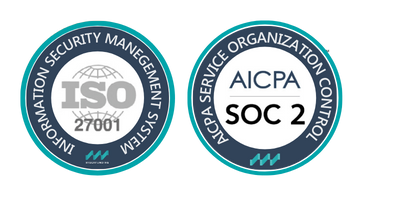Balancing human touch and automation
‘The things that make me different are the things that make me, me.’
Immortal words often attributed to that most eminent philosopher, Winnie the Pooh. And though a bear (not a human) and one of very little brain, his words feel more pertinent now than ever. Because the essence of the human experience is that no one else can think or see things from the same perspective. And that’s precisely what makes humans indispensable in the world of risk management.
Yet, to streamline processes and boost efficiency, financial institutions are increasingly turning to AI and predictive analytics to assess and mitigate risk. These automated systems, while efficient, lack the distinct qualities that make humans so powerful – empathy, ethical judgment and an understanding of the evolving ways of the world.
In this blog, we’ll delve deep into the evolving landscape of risk management – exploring how automation and human expertise can coexist harmoniously to create more robust, responsible, and ultimately successful risk management strategies.
The evolution of risk management
To understand the current state of risk management, we need to look at where it all began. Traditionally, it relied heavily on manual processes and historical data analysis, which, although valuable, were time-consuming and prone to human bias.
The introduction of automation marked a turning point. Advanced algorithms and machine learning promised faster, data-driven decision-making while reducing the potential for human error. Risk managers were excited about streamlined processes and more accurate predictions.
Since then, we’ve seen a huge upswing in automated risk management processes. In fact, a PwC report has estimated that by 2030, 30% of roles in the finance sector could be automated.
The rise of automation
In recent years, automation has transformed risk management practices, including the use of predictive modelling to identify patterns and anomalies that humans might otherwise miss. For example, AI can quickly scan social media activity and online behaviour, providing a holistic view of applicants for more accurate risk predictions.
Automated systems can also process swathes of data in seconds, providing risk managers with real-time insights into market trends or potential threats allowing portfolio managers to rebalance investments more effectively than ever.
However, automated systems lack human thought and empathy which can pose its own challenges.
Where automation falls short
The human touch
All of which means there’s still a host of reasons why people power still matters in the world of risk management. Human risk managers bring a wealth of skills and attributes to the table that simply can’t be replicated by machines:
Striking the right balance
So, how do financial institutions strike the right balance between automation and human expertise in risk management? Here are some strategies:
The value of weaving the human touch into use of automated systems
Imagine a bank using an automated algorithm to assess a business loan application. The algorithm would evaluate credit scores, financial histories, and debt ratios but may overlook other circumstances and life events that impact a company’s ability to repay the loan. Perhaps a particular news story drove a sudden spike in demand, or a senior manager retired leading to a period of transition.
Whatever the situation, a human loan officer could step in, consider the broader context, and gain a better understanding of the situation. This crucial human touch would result in a more informed decision, potentially saving the bank from issuing a loan that could turn sour.
Automation has brought huge advantages, but it must be matched with human expertise to deliver accurate and fair analysis. The right tools combine these two facets with cutting edge technology and established risk modelling. The resulting solutions streamline and simplify your processes while offering you the kind of rich, detailed insight to help you make confident decisions, fast.
To see how Wiserfunding can help you make smarter credit decisions click here.
SIMILAR POSTS

Key Credit Risks From the IMF’s Global Financial Stability Report
Lending Into Fragility: Key Risks From the IMF’s Global Financial Stability Report For lenders navigating deteriorating credit conditions, the IMF’s [...]

Defaults and Recoveries: Navigating Risk in Private Credit
When it comes to understanding credit risk, many models assume that defaults and recovery rates are independent. However, deeper [...]

Default Rates: 2025 Private Debt Forecasts
Default Rates: An In-Depth Look at 2025 Private Debt Forecasts Private debt defaults often involve complexities that go beyond [...]



